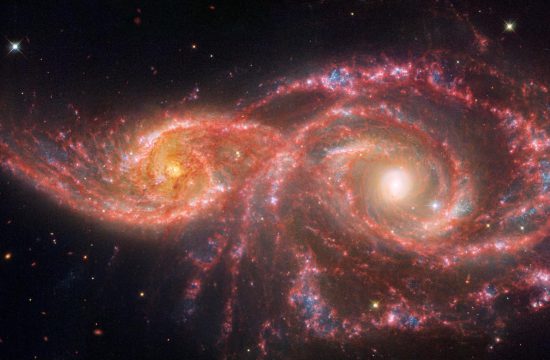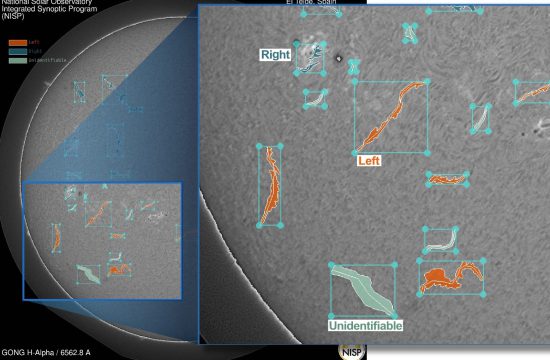
Hats Off to NASA’s Webb: Sombrero Galaxy Dazzles in New Image
In a new image from NASA’s James Webb Space Telescope, a galaxy named for its resemblance to a broad-brimmed Mexican hat appears more like an archery target ...

NEID Earth Twin Survey Delivers On Its Goal to Push the Limits of Exoplanet Discovery
For four years the NEID (rhymes with fluid) spectrograph, mounted on the WIYN 3.5-meter Telescope at U.S. National Science Foundation Kitt Peak National Observatory (KPNO), a Program of NSF NOIRLab, has been delivering on one of its main science ...

DESI Provides Best Test Yet of How Gravity Behaves at Cosmic Scales
Researchers have used the Dark Energy Spectroscopic Instrument (DESI) to map nearly six million galaxies across 11 billion years of cosmic history, allowing them to study how galaxies clustered throughout time and investigate the growth ...

NASA’s Hubble, Webb Probe Surprisingly Smooth Disk Around Vega
A team of astronomers at the University of Arizona, Tucson used NASA's Hubble and James Webb space telescopes for an unprecedented in-depth look at the nearly 100-billion-mile-diameter debris disk encircling Vega ...

‘Blood-Soaked’ Eyes: NASA’s Webb, Hubble Examine Galaxy Pair
The gruesome palette of these galaxies is owed to a mix of mid-infrared light from NASA’s James Webb Space Telescope, and visible and ultraviolet light from NASA’s Hubble Space Telescope. The pair grazed one another ...

Gemini North Captures Galactic Archipelago Entangled in a Web of Dark Matter
100 years ago Edwin Hubble discovered decisive evidence that other galaxies existed far beyond the Milky Way. This image, captured by the Gemini North telescope, one half of the International Gemini Observatory, features a portion ...

Harnessing AI for Space Weather Forecasting with NSF GONG Data
Solar filaments, dramatic thread-like structures visible in the Sun’s chromosphere, may hold the key to understanding one of the most powerful phenomena in space weather: Coronal Mass Ejections (CMEs). ...

NASA’s Hubble Sees a Stellar Volcano
NASA's Hubble Space Telescope has provided a dramatic and colorful close-up look at one of the most rambunctious stars in our galaxy, weaving a huge spiral pattern among the stars ...

NASA’s Hubble Finds that a Black Hole Beam Promotes Stellar Eruptions
In a surprise finding, astronomers using NASA's Hubble Space Telescope have discovered that the blowtorch-like jet from a supermassive black hole at the core of a huge galaxy seems to cause stars to erupt along ...

DECam Confirms that Early-Universe Quasar Neighborhoods are Indeed Cluttered
Observations using the Dark Energy Camera (DECam) confirm astronomers’ expectation that early-Universe quasars formed in regions of space densely populated with companion galaxies. DECam’s exceptionally wide field of view and special filters played a crucial ...

NASA’s Webb Peers into the Extreme Outer Galaxy
Astronomers have directed NASA’s James Webb Space Telescope to examine the outskirts of our Milky Way galaxy. Scientists call this region the Extreme Outer Galaxy due to its location more than 58,000 light-years away from the Galactic ...

Groundbreaking Achievement: NSF Daniel K. Inouye Solar Telescope Produces its First Magnetic Field Maps of the Sun’s Corona
Maui, Hawaii – The U.S. National Science Foundation (NSF) Daniel K. Inouye Solar Telescope, the world’s most powerful solar telescope, designed, built, and operated by the NSF National Solar Observatory (NSO), achieved a major breakthrough in ...
